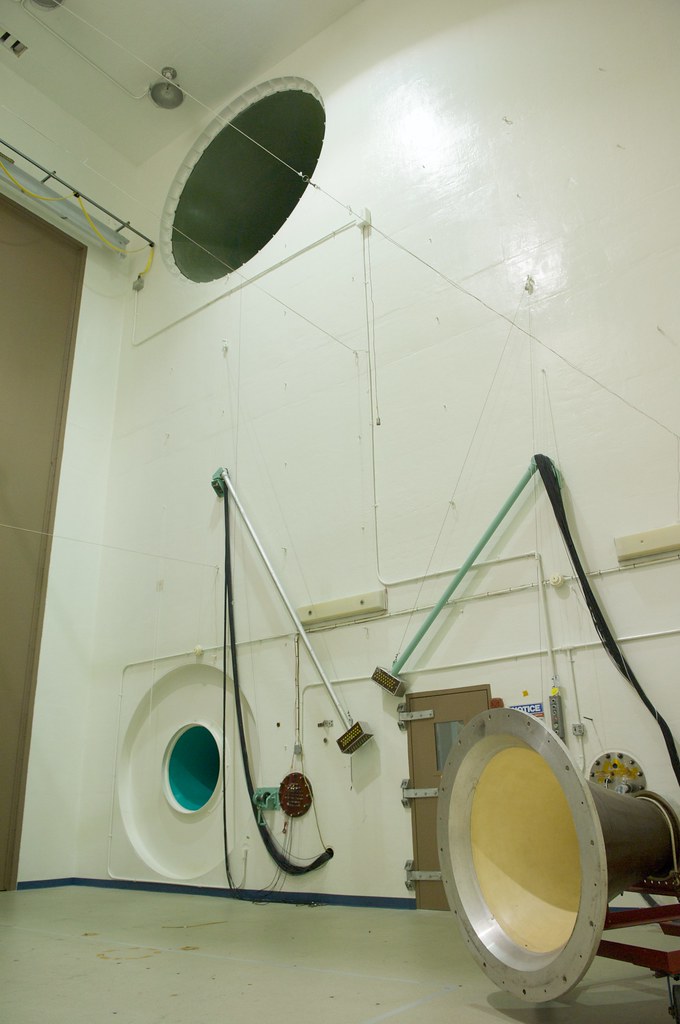Are you tired of struggling to achieve professional-quality sound in your home recording studio? Look no further! In this article, we will unveil the top acoustic design strategies that will revolutionize your recording experience. Whether you're a seasoned musician or a budding audio engineer, creating an optimal acoustic environment is essential for capturing pristine recordings. From controlling reflections to taming unwanted frequencies, we will guide you through the most effective techniques to transform your space into a haven for sonic perfection. Get ready to take your recordings to the next level with these expert-approved strategies for home recording studio acoustic design.

One crucial aspect of creating a professional home studio is ensuring proper sound isolation. This involves minimizing external noise and preventing sound leakage. To achieve this, consider using acoustic treatment materials such as soundproofing panels, bass traps, and acoustic foam. Additionally, sealing any gaps or openings in walls, doors, and windows can significantly improve sound isolation in your home recording studio.
Getting accurate bass response in a home studio can be challenging due to room resonances and standing waves. To optimize bass response, consider using bass traps strategically placed in corners or along walls. These traps absorb low-frequency energy and help reduce room modes. Additionally, experimenting with speaker placement and room positioning can also improve bass response in your home studio setup.
Reflection filters, also known as vocal shields or isolation filters, are essential tools for recording clean and clear vocals in a home studio. These filters are placed behind the microphone and help minimize reflections and room ambience. By reducing unwanted reflections, reflection filters can significantly improve the quality of vocal recordings, resulting in a more professional sound.
Diffusion panels are acoustic treatment tools that help scatter sound waves evenly in a room. By breaking up sound reflections, diffusion panels can create a more balanced and natural sound environment. Placing diffusion panels on walls or ceilings can help prevent excessive sound buildup and improve the overall sound quality in your home studio.
Early reflections can negatively impact the accuracy of your monitoring and recording environment. To control early reflections, consider using acoustic panels or foam on the walls and ceiling. These panels absorb sound reflections, preventing them from interfering with the direct sound. By minimizing early reflections, you can achieve a more accurate and transparent audio monitoring experience in your home studio.
The positioning of your studio monitors plays a crucial role in achieving accurate audio monitoring. Start by positioning your speakers at an equal distance from each other and from your listening position, forming an equilateral triangle. Avoid placing speakers too close to walls or corners, as this can cause unwanted bass buildup. Experiment with speaker height and toe-in angle to find the optimal positioning for accurate monitoring in your home studio.
When it comes to recording music or podcasts at home, creating the perfect acoustic environment is crucial. Without proper acoustic treatment, your recordings can sound muddy, echoey, or distorted. To achieve optimal sound quality, there are several essential strategies you should consider for your home recording studio.
Acoustic design techniques can greatly enhance the sound quality of your home studio. By strategically placing sound-absorbing materials, diffusers, and bass traps, you can control reflections, minimize standing waves, and achieve a balanced sound. These proven techniques will help unleash the power of sound in your home studio.
If you're looking to take your home studio from amateur to professional level, acoustic design strategies are a game-changer. By implementing techniques such as room measurement and analysis, speaker placement optimization, and sound isolation, you can transform your home studio into a professional recording environment. These strategies will elevate the quality of your recordings and bring you closer to achieving a studio-like sound.

When it comes to creating high-quality recordings in a home studio, mastering the art of acoustic design is crucial. By implementing key strategies, such as proper room dimensions, soundproofing, and diffusion, you can optimize the sound quality of your recordings.
Want your home recordings to sound as professional as those done in a professional studio? Expert tips for acoustic design can help you achieve studio-quality sound. From selecting the right materials for your walls and floors to strategically placing absorbers and diffusers, these tips can make a significant difference in the overall sound of your recordings.
Creating your dream home studio involves more than just buying equipment. To ensure optimal sound quality, you need to consider acoustic design strategies. From choosing the right room for your studio to properly treating the space with absorption and diffusion, these strategies are essential for creating the best possible recording environment.

When setting up a home recording studio, it is essential to consider soundproofing techniques to minimize external noise interference. One effective method is to install acoustic insulation in the walls, floors, and ceiling to reduce sound transmission. Additionally, sealing any gaps or cracks with acoustic caulk can further prevent sound leakage. Using heavy curtains or soundproofing blinds on windows and doors can also help block external noise. By implementing these soundproofing techniques, you can create a quieter environment for recording and ensure better audio quality.
Optimizing room acoustics is crucial for achieving high-quality recordings in a home studio. One way to improve the acoustics is by strategically placing bass traps in the corners of the room to control low-frequency reflections. Absorption panels can be installed on the walls to reduce mid and high-frequency reflections, preventing excessive reverberation. Diffusers can also be used to scatter sound waves and create a more balanced acoustic environment. By optimizing room acoustics, you can minimize unwanted reflections and achieve a more accurate and professional sound in your recordings.
When constructing a home recording studio, selecting the appropriate acoustic materials is essential for achieving optimal sound quality. Acoustic foam panels are commonly used to absorb and control sound reflections. They are available in various thicknesses and densities, allowing you to choose the most suitable option for your studio. Fiberglass panels are another popular choice for their excellent sound absorption properties. Additionally, materials such as mass-loaded vinyl can be used to create sound barriers and reduce sound transmission. By carefully choosing the right acoustic materials, you can create a studio environment that enhances the recording experience and produces professional results.

Creating a soundproof environment is crucial for achieving professional-quality recordings in a home studio. Some effective techniques include using double-layered drywall, sealing gaps and cracks, and installing soundproof doors and windows.
Optimizing room acoustics is essential for capturing accurate sound recordings. This can be achieved by strategically placing bass traps, diffusers, and acoustic panels to control reflections, reduce flutter echoes, and minimize standing waves.
Selecting the appropriate acoustic materials is vital for constructing a studio with optimal sound quality. High-density fiberglass insulation, acoustic foam panels, and mass-loaded vinyl are commonly used materials that absorb and block sound effectively.
Proper placement of acoustic panels and diffusers can greatly enhance the sound quality in a home studio. It is important to strategically position panels on walls, corners, and ceilings to control reflections and achieve a balanced sound.
For musicians on a budget, there are several DIY acoustic treatment options available. These include building your own bass traps using mineral wool insulation, creating diffusers with wooden slats, and using thick curtains or carpets to absorb sound reflections.
Professional-grade home recording studios require advanced acoustic design considerations. This includes calculating room dimensions, using specialized software for acoustic analysis, and implementing advanced techniques such as Helmholtz resonators and quadratic diffusers.
Enhancing sound isolation in home recording studios is crucial for achieving professional-quality recordings. One effective way to improve sound isolation is by using acoustic treatment materials such as bass traps, acoustic panels, and diffusers. Bass traps help absorb low-frequency sound waves, preventing them from bouncing around and causing unwanted resonances. Acoustic panels are designed to absorb mid and high-frequency sound waves, reducing echo and reverberation. Diffusers scatter sound waves in various directions, minimizing reflections and creating a more balanced sound. Additionally, sealing gaps and cracks in walls, windows, and doors can also significantly improve sound isolation.
Optimizing bass response in home studio setups is essential for achieving accurate and balanced low-frequency reproduction. One way to optimize bass response is by positioning the studio monitors correctly. Placing the monitors away from walls and corners can help reduce bass build-up and improve clarity. Experimenting with different monitor placements and angles can also help find the sweet spot for optimal bass response. Another method is to use bass traps, which absorb excessive bass frequencies and prevent them from interfering with the mix. Additionally, using room correction software can help analyze and correct any frequency imbalances in the bass range, resulting in a more accurate and controlled bass response.
Utilizing reflection filters can greatly improve the quality of vocal recordings in home studios. Reflection filters, also known as vocal shields or isolation filters, are panels that surround the microphone to minimize room reflections and background noise. They are designed to absorb and diffuse sound waves, preventing them from bouncing back into the microphone and causing unwanted coloration or echo. Reflection filters are particularly useful in untreated rooms or spaces with poor acoustics, as they help create a more controlled and focused sound for vocals. By reducing unwanted reflections, reflection filters can enhance the clarity and intelligibility of vocal recordings, resulting in professional-sounding tracks.
One crucial aspect of creating a professional home studio is ensuring proper sound isolation. This involves minimizing external noise and preventing sound leakage. To achieve this, consider using acoustic treatment materials such as soundproofing panels, bass traps, and acoustic foam. Additionally, sealing any gaps or openings in walls, doors, and windows can significantly improve sound isolation in your home recording studio.
Getting accurate bass response in a home studio can be challenging due to room resonances and standing waves. To optimize bass response, consider using bass traps strategically placed in corners or along walls. These traps absorb low-frequency energy and help reduce room modes. Additionally, experimenting with speaker placement and room positioning can also improve bass response in your home studio setup.
Reflection filters, also known as vocal shields or isolation filters, are essential tools for recording clean and clear vocals in a home studio. These filters are placed behind the microphone and help minimize reflections and room ambience. By reducing unwanted reflections, reflection filters can significantly improve the quality of vocal recordings, resulting in a more professional sound.
Diffusion panels are acoustic treatment tools that help scatter sound waves evenly in a room. By breaking up sound reflections, diffusion panels can create a more balanced and natural sound environment. Placing diffusion panels on walls or ceilings can help prevent excessive sound buildup and improve the overall sound quality in your home studio.
Early reflections can negatively impact the accuracy of your monitoring and recording environment. To control early reflections, consider using acoustic panels or foam on the walls and ceiling. These panels absorb sound reflections, preventing them from interfering with the direct sound. By minimizing early reflections, you can achieve a more accurate and transparent audio monitoring experience in your home studio.
The positioning of your studio monitors plays a crucial role in achieving accurate audio monitoring. Start by positioning your speakers at an equal distance from each other and from your listening position, forming an equilateral triangle. Avoid placing speakers too close to walls or corners, as this can cause unwanted bass buildup. Experiment with speaker height and toe-in angle to find the optimal positioning for accurate monitoring in your home studio.
In conclusion, the top acoustic design strategies for home recording studios are of paramount importance in the world of music production and audio engineering. These strategies not only enhance the sound quality and clarity of recordings but also create an environment that fosters creativity and productivity. By implementing techniques such as soundproofing, diffusion, and absorption, home recording studios can achieve professional-level results without the need for expensive equipment or dedicated spaces. In today's digital age, where more and more artists are turning to home recording, the significance of these strategies cannot be overstated. They empower musicians and producers to create high-quality recordings from the comfort of their own homes, democratizing the music production process and opening up new opportunities for aspiring artists. As technology continues to advance and the music industry evolves, the knowledge and application of these acoustic design strategies remain relevant and essential for anyone seeking to achieve professional sound in their home recording studio. To stay updated on the latest insights and developments in the field of acoustic design, follow us on our social media accounts.